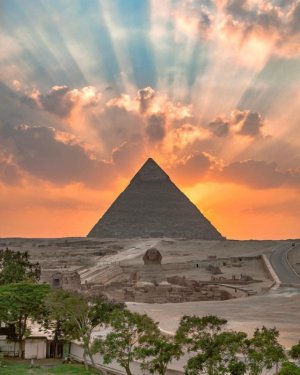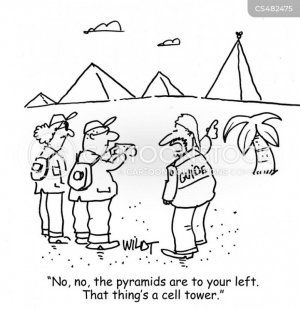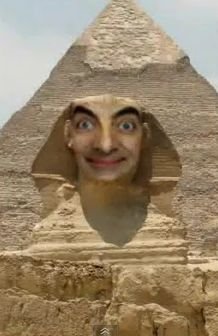Gemstone Found In King Tut's Tomb Formed When A Meteor Collided With Earth
"In 1922, British archaeologist Howard Carter discovered the untouched tomb of Tutankhamen, a minor pharaoh who ruled over Egypt almost 3,300 years ago. When Carter entered the tomb for the very first time and asked if he could see anything, he famously responded: ”Yes, wonderful things.” Tutankhamen's burial chambers were filled with statues made of ivory, items made of gold and precious jewelry. In a treasure chest, Carter discovered a large pectoral, a breastplate decorated with gold, silver, various precious jewels and a strange gemstone, that the pharao wears across his chest. The breastplate shows the god Ra as a winged scarab, made from a yellow-green gemstone, carrying the celestial bark with the Sun and the Moon into the sky."
Tutankhamun's breastplate features a scarab carved from Libyan Desert Silica Glass.
J.Bodsworth/Wikipedia
"The researchers analyzed grains of the mineral zircon found in the desert glass, discovering that the supposed zircon grains are actually a very rare mineral called reidite. Reidite is chemically similar to zircon, however, displays a different, denser crystalline structure. Reidite forms only under very high pressure, es experienced during massive meteorite impacts. Reidite can't form by the low pressure of an airburst. Airbursts, as the researchers argue, create shock waves in Earth's atmosphere with pressures of some thousands of pascals. During a meteorite impact, the shock waves in the ground can reach some billions of pascals, millions of times more powerful than any airburst."
Piece of Lybian Desert Glass.
H.Raab
"It's also unclear how the desert glass became part of Tutankhamen's treasures. Archaeological evidence suggests that an ancient system of caravan routes existed around the Gilf Kebir Plateau, but it doesn't seem that the routes were used to search or trade for the desert glass. It seems that the piece used for the scarab was discovered by chance or maybe an exotic gift. It remains the only known example where an Egyptian artist used this mysterious material." (Read More)























